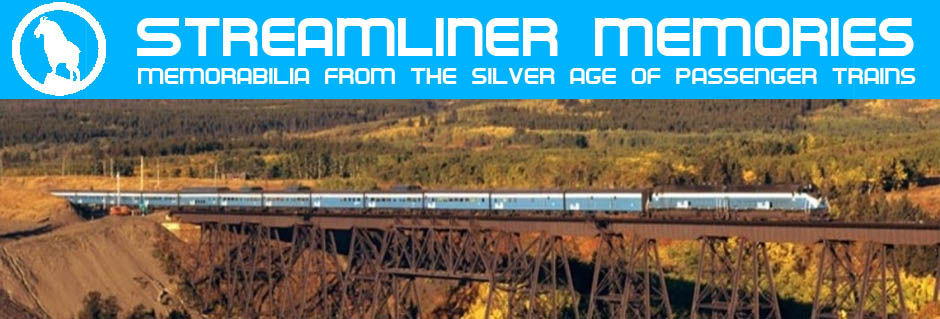A Diesel-electric locomotive consists of a Diesel engine that turns an electrical generator to produce electricity that powers electrical motors to the wheels. In 1945, General Motors had developed a generator capable of upping the FT’s power from 1,350 horsepower … Continue reading
Category Archives: General Motors
GM continued to make E7 locomotives through early 1949, while the E8 was introduced in late 1949. A total of 32 railroads bought E7s. Note that all of the paintings of E7s used on these data cards are based on … Continue reading
GM built a demonstrator E7, but it was less to demonstrate the E7 itself than to show off the Train of Tomorrow. Of course, by stimulating interest in riding passenger trains, GM hoped to stimulate sales of its locomotives, but … Continue reading
The E7 proved to be the most popular E unit General Motors produced, though only by a small margin. GM made 510 E7s, 496 E8s, and 344 of all other Es combined. This card is signed “Harry” meaning Harry Bockewitz. … Continue reading
Although the war was still raging in early 1945, General Motors had made enough minor improvements to the Diesel engines that powered its locomotives to justify advertising a successor to the E6. The E7 differed from the E6 more on … Continue reading
General Motors sold a total of 1,096 FT units. This success was partially because so many railroads quickly accepted the revolutionary advantages of Diesels. But it was also partly because the war prevented GM from innovating, which would have led … Continue reading
While an abundance of coal or a faith in future innovations in steam technology may explain why railroads like Norfolk & Western and Union Pacific didn’t buy FTs, neither reason explains one big non-buyer: Southern Pacific. SP had a lot … Continue reading
If 22 railroads bought FT locomotives, which ones didn’t? The main ones were coal haulers, such as C&O and N&W, and other railroads with innovative steam programs, such as Pennsylvania and Union Pacific. These railroads thought they could make steam … Continue reading
Great Northern was actually the second railroad (after Santa Fe) to receive a new FT locomotive, number 5700, which was delivered in May 1941. There doesn’t seem to be a data card for that locomotive but here is a painting … Continue reading
World War II slowed production of Diesel locomotives. GM was allowed to keep producing them provided it didn’t interfere with its production of Diesel engines for the Navy. However, it wasn’t allowed to design new locomotives, so the FT remained … Continue reading
